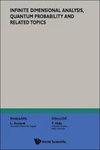为什么天空是蓝色的?
IF 0.8
4区 数学
Q4 MATHEMATICS, APPLIED
Infinite Dimensional Analysis Quantum Probability and Related Topics
Pub Date : 2021-12-01
DOI:10.1088/978-0-7503-3655-0ch9
引用次数: 0
摘要
Kupferschmidt关于“蓝光实际上并不是蓝色”的声明,表达了一种被作家、物理学家、教育家和许多其他声音广泛认同的信念。它相当于对颜色的定义。据说,蓝光和所有其他颜色的光都只有特定的波长。这个词仅仅是表达。这意味着颜色没有真实感,我们看到的东西都是有颜色的,一个彩色的世界并不是真实的世界。这种对颜色的理解否定了人类经验是一切认知的基础。对人类经验的怀疑是现代西方社会最根深蒂固的偏见,这是他们的祸根,使我们与我们生活的世界和我们自己疏远。在虚拟现实已经成为我们体验的主要部分,以及关于“假新闻”和“事实核查”的问题变得紧迫的时候,我们能否依靠自己的经验来接触真实世界的问题就变得更加紧迫了。几个世纪以来的哲学和自然科学辩论和推理似乎否认我们感知和体验的世界是真实的。然而,在推理中有一个明显的矛盾。像Kupferschmidt那样说话的人认为大脑是真实的。他们采用真实的用于研究大脑活动的仪器,以及研究人员的行动、干预和测量。他们认为所有导致电磁辐射和特定波长光子科学的东西都是真实的。当他们得出大脑活动是真实的,但对颜色的感知不是的结论时,推理就变得不合理了。他们宣称一组观测是真实的,另一组观测是不真实的。当你质疑感官知觉时,你也必须质疑大脑研究中涉及的感官知觉、观察和测量。否认感官知觉的真实性的主张破坏并摧毁了所有自然科学的基础。如果感知到的颜色不是真实的,那么感知到的大脑和测量工具也不是真实的。已故哲学家罗纳德·布雷迪(Ronald Brady)认为,一类观察(神经科学观察到的大脑功能)应该与所有其他观察(如颜色、味道、声音、温暖、触觉、平衡等)区分开来,这种说法不是基于经验的科学的结果,而是世界观偏好的结果。这是相信的,但未得到观察的证实一旦我们认识到在科学中我们不能回避感官经验,认识到一切知识的基础是人类经验,我们就不会问颜色的“背后”和“原因”是什么。我们不会把与电磁辐射和大脑研究有关的现象类别,或任何其他类别的现象,置于视觉现象类别之上或与之相对立。现象当然是相互联系的,但它们不会相互抵消,一个是真实的,另一个不是真实的。现象与现象之间的关系是一个植根于经验的研究问题。正是在这里,我们遇到了障碍和自身的局限。我们需要问自己:哪些潜在的偏好有助于形成我们的判断?我们隐藏的假设是什么?我们僵化的思维形式是什么?我们概念上的局限是什么?基于现象的色彩研究如何展开?现象充实并修正我们的知识。通过观察世界上颜色的现象,“为什么天空是蓝色的?”的问题变成了“蓝色在哪里以及如何出现?”不,这是我的,这是我的,这是我的本文章由计算机程序翻译,如有差异,请以英文原文为准。
Why is the sky blue?
Kupferschmidt’s statement that “blue light is not actually blue,” expresses a conviction that is widely shared by writers, physicists, educators, and many other voices. It amounts to a definition of what color is. Blue light, and all other colored light, is said to be merely particular wavelengths. The word merely is expressive. It means that colors have no reality, that we only see things as colored, and that a colorful world is not the real world. This understanding of color denies that human experience is the basis for all knowing. Doubt about human experience is a most deeply ingrained prejudice of modern western societies, and it is their bane, estranging us from the world we live in and from ourselves. In a time when virtual reality has become a dominant part of our experience, and when questions about “fake news” and “fact checking” have become pressing, the question whether we can rely on our experiences as encounters with a real world is of heightened urgency. Centuries-long philosophical and natural scientific debate and reasoning seem to deny that the world we perceive and experience is real. However, there is a glaring inconsistency in the reasoning. People who speak like Kupferschmidt take the brain to be real. They take the instruments used for researching brain activity for real, as well as the researcher’s actions, interventions, and measurements. They take to be real everything that led to the science of electromagnetic radiation and photons with particular wavelengths. When they then come to the conclusion that brain activity is real but the perception of color is not, the reasoning becomes unreasonable. They declare one set of observations to be real, another set of observations to be unreal. When you question sense perceptions, you must also question the sense perceptions, observations, and measurements involved in brain research. The claim that denies reality to sense perceptions undermines and destroys the foundation of all natural science. If color as perceived is not real, then the brain as perceived and the measuring instruments as perceived are also not real. The late philosopher Ronald Brady argues that the statement that one class of observations (those of brain functions as observed by neuroscience) should be set apart from all other observations — like color, taste, sound, warmth, touch, balance, and so on — is not a result of experiencebased science but the result of a preference for a worldview. It is believed, but not substantiated by observation.3 Once we realize that in science we cannot shun sense experience, that the basis of all knowing is human experience, we do not ask what “is behind” and “causes” color. We do not set the class of phenomena relating to electromagnetic radiation and brain research, or any other class of phenomena, above and against the class of visual phenomena. Phenomena relate to each other, certainly, but they do not cancel each other out, the one being real, others not being real. How phenomena relate to phenomena is the question of research rooted in experience. It is here that we meet hindrances and our own limitations. We need to ask ourselves: What underlying preferences help to shape our judgments? What are our hidden assumptions? What are our rigid thought forms? What are our conceptual limitations? How can color research based on phenomena unfold? Phenomena inform and modify our knowledge. By attending to appearances of color in the world, the question “Why is the sky blue?” becomes the question “Where and how does the color blue appear?” No t e s a n d R e v i e w s
求助全文
通过发布文献求助,成功后即可免费获取论文全文。
去求助
来源期刊
CiteScore
1.50
自引率
11.10%
发文量
34
审稿时长
>12 weeks
期刊介绍:
In the past few years the fields of infinite dimensional analysis and quantum probability have undergone increasingly significant developments and have found many new applications, in particular, to classical probability and to different branches of physics. The number of first-class papers in these fields has grown at the same rate. This is currently the only journal which is devoted to these fields.
It constitutes an essential and central point of reference for the large number of mathematicians, mathematical physicists and other scientists who have been drawn into these areas. Both fields have strong interdisciplinary nature, with deep connection to, for example, classical probability, stochastic analysis, mathematical physics, operator algebras, irreversibility, ergodic theory and dynamical systems, quantum groups, classical and quantum stochastic geometry, quantum chaos, Dirichlet forms, harmonic analysis, quantum measurement, quantum computer, etc. The journal reflects this interdisciplinarity and welcomes high quality papers in all such related fields, particularly those which reveal connections with the main fields of this journal.

 求助内容:
求助内容: 应助结果提醒方式:
应助结果提醒方式:


